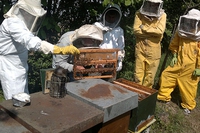
Global warming and health. A changing climate is making Americans sick
A report has sounded the alarm about the dangers of global warming for the citizens of the United States. The report, The impacts of climate change on human health in the United States, was released by the country’s government in 2016. Climate change is causing a surge in mental and respiratory illnesses, allergies, deaths from








